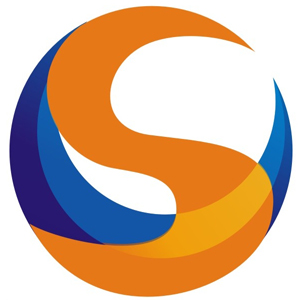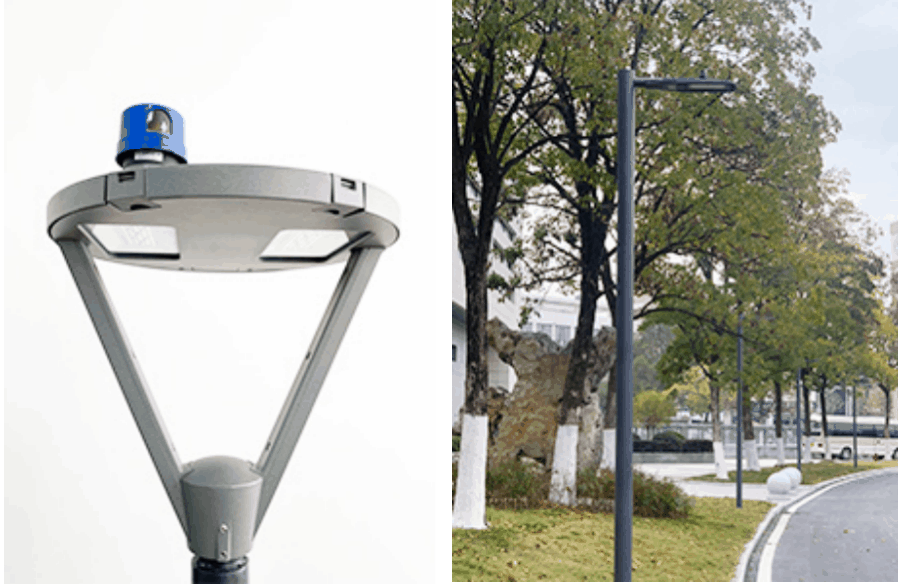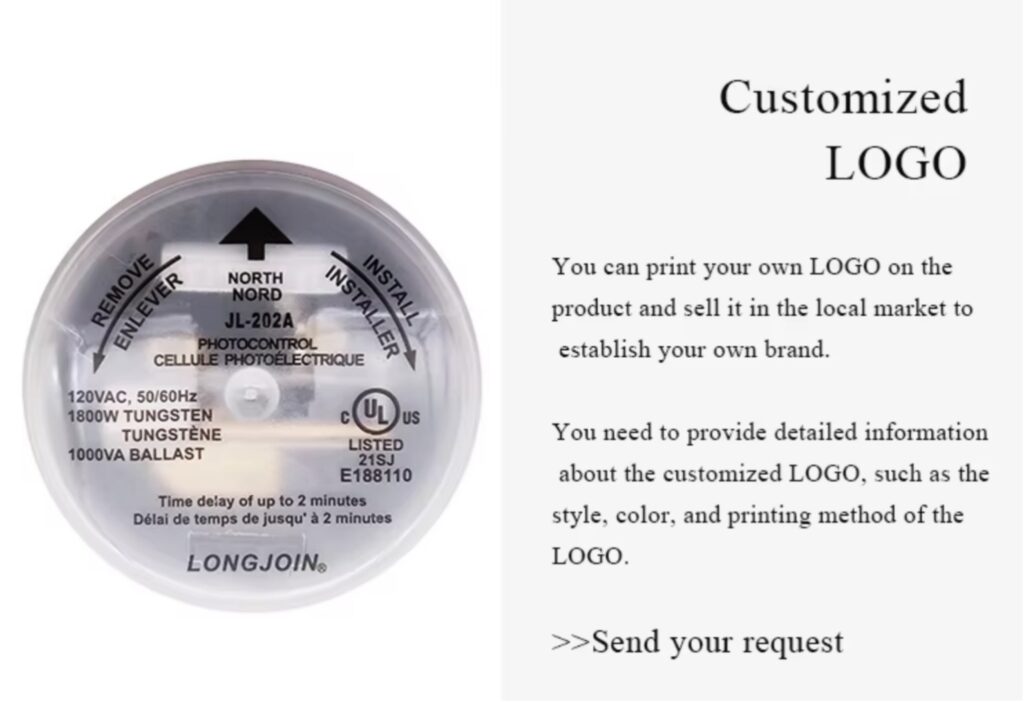Outline
- Introduction
- What Real-World Challenges Do Luminaire Manufacturers Face Today?
- How Do Long-Join Light Sensors Deliver Targeted Solutions for These Needs?
- Why Do Leading Luminaire Manufacturers Trust Long-Join?
- How Does Long-Join Shape the Future of Smart Street Lighting?
- How Does Long-Join Support Global OEMs Beyond Street Light Controllers?
- The Bottom Line
In today’s outdoor lighting industry, luminaire manufacturers are under pressure to deliver more than just efficient fixtures. Cities and customers expect smarter and globally compliant solutions.
At the heart of every modern streetlight lies one critical component, the photosensor. It determines performance and reliability. Long-Join Electronics understands this responsibility. That’s why leading manufacturers trust its photocells to match their needs for quality, certification, and innovation.
Luminaire makers face specific obstacles when integrating photocells. Each one influences design timelines and final field performance. Here is a brief explanation of some common challenges.

Structural Fit
A photocell switch that does not align mechanically with Zhaga Book 18 or ANSI C136.41 (NEMA) sockets can halt production. Some small mismatches include:
- Locking tabs
- Pin alignment
- Sealing profiles
This creates assembly delays and field failures. Manufacturers need guaranteed dimensional accuracy to avoid costly redesigns and rejected lots.
Electrical Compatibility
Streetlight drivers demand exact electrical conditions. Outdoor photocell light sensor must operate within AC120–480 V or DC12/24 V while ensuring stable fail-on or fail-off logic.
A mismatch causes premature switching or circuit overloads. Excess power draw also burdens LED drivers, increasing energy waste and maintenance. Reliable electrical pairing is non-negotiable.
Certification Consistency
A luminaire cannot pass certification unless every component meets the same regulatory scope. If a light sensor photocell switch lacks UL773 or CE compliance, the entire fixture may be denied approval. This:
- Disrupts global export plans
- Delays market entry
Manufacturers require photocells that mirror their compliance pathway without additional testing cycles. Here is a table explaining some key certifications and their impact.
| Certification | Region/Standard | Impact on Photocells |
| UL | North America | Ensures product safety and compliance with U.S. and Canadian markets. |
| CE | European Union | Confirms conformity with EU directives on health, safety, and environmental protection. |
| RoHS | Global (EU-led) | Restricts the use of hazardous substances, ensuring eco-friendly components. |
| ANSI C136 | North America | Defines mechanical/electrical interface standards for outdoor lighting controls. |
| ISO 9001 | Global | Certifies quality management systems, ensuring consistent production and reliability. |
Product Reliability
Outdoor lighting operates for decades under stress. The photo sensor must withstand harsh environmental conditions. Lightning strikes and grid surges frequently damage unprotected units, raising return rates. Without high IP sealing and surge immunity, failures spread across networks.
Branding Needs
Lighting is both functional and visual. A photo control that looks mismatched reduces brand appeal. Manufacturers often require
- Color coding
- Molded housings
- Laser-etched logos
This is usually done to reflect their identity. Without this alignment, fixtures appear generic, weakening brand differentiation in competitive bids. Branding flexibility is a real manufacturing priority.
Assembly Convenience
Lines need plug-and-play modules. Labeling, manuals, and kits must match manufacturing flow. Delays or errors here cause line stoppages.
OEM / ODM Flexibility
Manufacturers increasingly require tailored solutions. This include
- Custom delay settings
- Climate-specific testing
- Unique electrical logic
Without engineering support, these requests stall. Suppliers must offer agile design services to keep projects moving toward delivery.
How Do Long-Join Light Sensors Deliver Targeted Solutions for These Needs?
Long-Join solves integration pain points with precision. Every feature targets a real manufacturing challenge.

Precision Fit
Long-Join provides a broad range of Zhaga Book 18 and ANSI C136.41 (NEMA) models. Every dusk-to-dawn photocell is dimensionally accurate to socket guidelines, reducing trial-and-error on the line. The result is faster assembly and zero rework risk.
Electrical Matching
Light sensor switches support AC120–480 V and DC12/24 V, covering global fixture designs. Options include fail-on or fail-off logic, tailored to safety requirements. Low power consumption ensures no wasted load on LED drivers, which is critical in large deployments.
Global Certifications
Long-Join products hold UL773, CE, and ISO9001 approvals. These align with North America, Europe, and Asia market entry requirements. Using pre-certified components removes delays in final luminaire certification.
Built for Harsh Environments
Outdoor reliability is achieved with IP65–IP67 sealing. Surge protection ratings extend from 10 kA to 20 kA, guarding against lightning and grid spikes. Materials like UV-stabilized PBT and PP resist chemical corrosion and heat deformation.
Branding Support
Manufacturers can customize housings with specific colors—blue, black, gray, or brand-matched tones. Laser-etched logos and private molds reinforce OEM identity. Packaging design can also be tailored to end-customer requirements.
Assembly-Ready Packaging
Photoelectric sensors are delivered with 1:1 matched kits, manuals, and labeling. Clear installation indicators reduce errors on high-speed production lines. This ensures each unit reaches the field exactly as intended.
Expert Engineering
In-house R&D teams provide CAD drawings, trial fittings, and design feedback. Structural engineers work directly with OEMs to integrate photocells into unique fixture housings. This reduces project lead times.
Flexible Custom Services
Special testing requests—such as salt-spray exposure, UV chamber trials, or custom delay settings—are supported. Long-Join also offers LED attenuation compensation for better daylight sensitivity. This flexibility is critical for projects in extreme climates.
Why Do Leading Luminaire Manufacturers Trust Long-Join?
Luminaire makers demand precision, reliability, and seamless integration. Long-Join delivers on all three—making it a top choice for global OEMs.
Mechanical + Electrical Match
Long-Join’s photocells are engineered to interface exactly with Zhaga and ANSI sockets. No loose fits. No dodgy wiring. System alignment is guaranteed—right out of the box. This boosts production quality and cuts rework.
Brand-Aligned Deliverables
OEMs get matched aesthetics and branding. Long-Join supports custom colors, laser-etched logos, and tailored packaging. That ensures fixtures stay true to design language, reinforcing trust with end customers.
Field-Proven Reliability
Long-Join sensors are built to stand up to the elements. The key offerings include:
- IP65–IP67 sealing
- UV-resistant materials
- Surge protection
This helps them excel in the toughest environments. Returns drop. Operational uptime improves.
Assembly-Friendly Delivery
Long-Join provides plug-and-play modules in matched kits. Each part is labeled and includes manuals. High-speed lines can move without slowdown. There’s less confusion, fewer errors, and faster throughput.
Custom-Engineering Capability
Every OEM gets dedicated technical support. Long-Join provides trial fittings, CAD feedback, and special adjustments—like delay tuning or LED compensation. This flexibility avoids off-the-shelf compromises while delivering tailored solutions.
Trusted by Global Brands
Long-Join’s long-term partnerships include Philips (Signify), Cree, GE, and Eaton. Their continued collaboration speaks to the supplier’s reliability and alignment with major OEM standards.
How Does Long-Join Shape the Future of Smart Street Lighting?
Long-Join doesn’t just supply photo switch sensors. It builds the backbone of smart, connected lighting. Their approach pushes forward city-wide intelligence and sustainable infrastructure.
Strategic Smart-City Partner
Long-Join treats street lighting as a gateway to the Internet of Things. Its smart controllers comply with both Zhaga and NEMA standards. These devices act as core nodes in municipal IoT systems. They let cities collect data, detect faults remotely, and automate lighting with accuracy.
Scalable Infrastructure
Long-Join builds controllers with the latest communication protocols, including:
These protocols enable mesh networks and long-range links. The result is seamless, city-wide connectivity in real time. Here is a table of communication protocols supported by LongJoin and their key features.
| Protocol | Key Features | Application Benefit |
| Zigbee | Mesh networking, low power, scalable | Widely used in smart city deployments for reliable, flexible control. |
| LoRa | Long-range, low data rate, low power | Ideal for wide-area smart lighting with minimal infrastructure. |
| Bluetooth Mesh | Short-range, fast pairing, energy-efficient | Suitable for localized lighting control in campuses or parks. |
| NB-IoT | Cellular-based, strong penetration, secure | Best for urban areas needing robust, carrier-grade connectivity. |
| DALI-2 | Two-way communication, open standard | Enables advanced dimming, monitoring, and interoperability |
Continuous Compliance
Long-Join keeps evolving its smart lighting controls. These units are no longer just sensors. They are adaptive, IoT-ready modules designed for smart-city needs.
All products follow global standards. That means full interoperability and freedom from vendor lock-in. For cities, this is crucial when scaling smart lighting and related services.
How Does Long-Join Support Global OEMs Beyond Street Light Controllers?
Long-Join is more than a parts supplier. It delivers a complete ecosystem of support. OEMs gain full-system readiness, from socket kits to smart controllers and tailored services.

Expanded Product Ecosystem
Long-Join supplies a broad suite of accessories beyond outdoor light sensor switches:
- Zhaga and NEMA socket systems for seamless fixture integration.
- Twist-lock, wire-in, bulb-holder, and smart controller modules, including wireless options.
- Preassembled photocell socket kits for fast implementation and consistent quality.
Co-Design, Sampling, and Lifecycle Support
Long-Join offers tailored OEM/ODM design services. They support product samples, custom configurations, and quick validation cycles. From early design to final delivery, they back OEMs with technical and manufacturing guidance.
OEMs benefit from sample services and one-stop customization workflows. This speeds up integration, minimizes risk, and keeps production on schedule.
True Solution Partner, Not Just a Parts Vendor
Long-Join holds 20+ years of experience in designing, manufacturing, and servicing intelligent lighting controls. Their offerings span from standard modules to full smart-city-ready systems.
Here is a table outlining some global cities that implemented smart lighting.
| City | Deployment Focus | Key Benefits Achieved |
| Barcelona, Spain | IoT-based street lighting | 30% reduction in energy use, improved remote monitoring. |
| Los Angeles, USA | LED + smart photocells | Saved $9M annually, lowered carbon footprint. |
| Copenhagen, Denmark | Adaptive smart lighting | 76% energy savings, enhanced pedestrian/cyclist safety. |
| Singapore | Integrated smart city platform | Improved traffic management, reduced maintenance costs. |
| Chicago, USA | Citywide smart lighting program | Increased reliability, faster outage response times. |
The Bottom Line
Smart street lighting demands reliability, adaptability, and compliance with global standards. Long-Join’s solutions address real-world challenges and prepare cities for intelligent, connected infrastructure. For dependable supply, Chi-Swear offers Long-Join smart photocells with proven quality and consistent global support.
External Links
- https://www.zhagastandard.org/books/overview/smart-interface-between-outdoor-luminaires-and-sensing-communication-modules-18.html
- https://www.nema.org/standards/technical/ansi-c136-series-standards-for-roadway-and-area-lighting-equipment
- https://www.iec-equipment.com/new/new-31-969.html
- https://www.ul.com/solutions
- https://single-market-economy.ec.europa.eu/single-market/goods/ce-marking_en
- https://en.wikipedia.org/wiki/RoHS
- https://www.iso.org/standard/62085.html
- https://en.wikipedia.org/wiki/Zigbee
- https://en.wikipedia.org/wiki/Narrowband_IoT
- https://lora-alliance.org/






